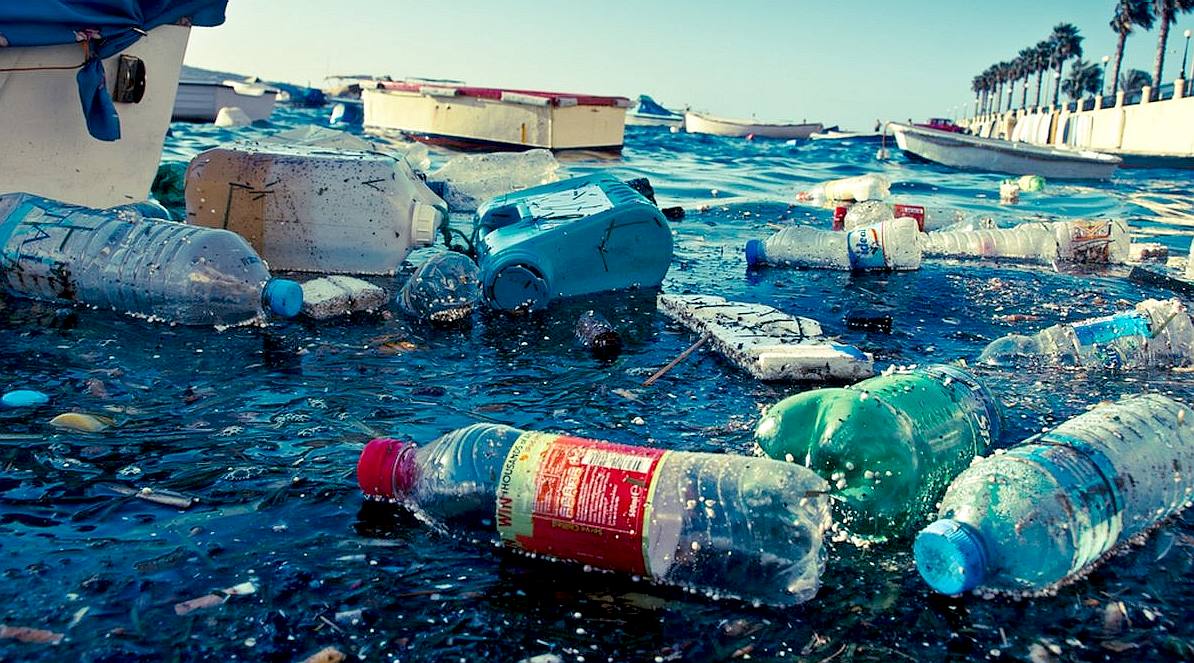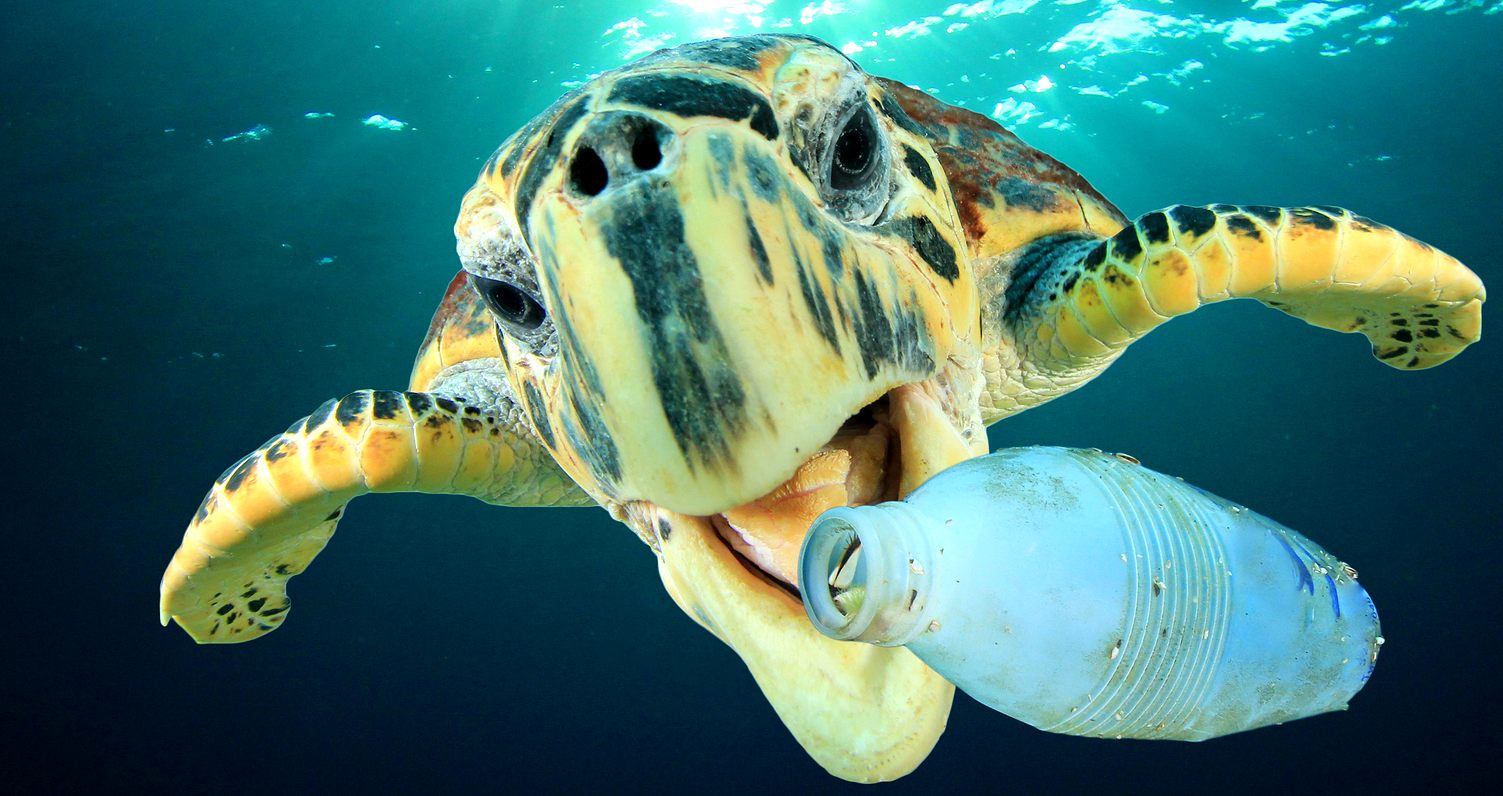
THE
TELEGRAPH 8 April 2019
Can we really clean up the plastic waste fouling our oceans?
Projects such as The Ocean Cleanup are determined to remove floating plastic from the seas but face a formidable battle.
The oceans have become the easy option for dumping of plastic and other waste. It has been estimated that we are adding perhaps 10 million tonnes every year.
Larger pieces such as plastic bags can choke animals such as turtles or dolphins, while smaller pieces – microplastic – are effectively everywhere, entering the food chain with unknown consequences for marine and human consumers.
Efforts are under way to try to tackle this oceanic rubbish heap, but are they working?
Perhaps the most prominent attempt to remove plastic from the seas is The Ocean Cleanup, which bills itself as “the largest cleanup in history”. It is the brainchild of a Dutch inventor,
Boyan
Slat, who is just 24 years old.
Inspired by rubbish he encountered when scuba diving in Greece aged 16, Mr Slat devised a scheme to use large floating barriers where the currents would accumulate the plastic that floated near the surface. Similar methods are used on rivers to great effect, and he first presented his idea at a
TEDx talk in 2012, before founding The Ocean Cleanup the following year.
Despite quickly raising almost $2.2m to make his plan a reality, the barriers’ first real-world test in the
Great Pacific Garbage
Patch, a region where floating plastic is unusually dense because of swirling ocean currents, saw the barriers lose plastic almost as fast as they collected it. By the end of December one of the barriers had been damaged and Mr Slat decided to tow them back to port, earlier than planned, for repairs.
The complex challenge of ocean cleanup
Several oceanographers had repeatedly warned Mr Slat since the project’s inception that his barrier design was unlikely to work.
In 2014, Kim Martini and Miriam Goldstein published a
detailed critique of The Ocean Cleanup’s plans, pointing out that there was no evidence to show that the barriers could actually capture plastic and that they were likely to break or become covered in organisms such as algae and molluscs.
One key issue was that the barriers extended only a few metres down, while another was the question of unexpected knock-on effects.
Many organisms from tiny crabs and insects to the Portuguese man-of-war, an animal that looks superficially like a jellyfish, live on or near the surface of the sea, where they form an ecosystem called the neuston. Any such life at the surface risks being caught by the barriers in at least as great a quantity as any plastic.
There is also the matter of tiny fragments of microplastics. Only a fraction of the plastic pieces in the ocean are large, such as crates, bottles or shopping bags. Much of the microplastic is from car and truck tyres, as well as fibres from clothing materials, together with larger pieces of plastic that are in the process of decomposition.
Alternatives to barriers
A radical alternative to The Ocean Cleanup seeks to address the microplastics issue. A project called
GoJelly, funded by the European Union to the tune of €6m, is exploring whether jellyfish mucus could be used to collect microplastic.
A study published in 2015 by Philippe Barthélémy, at the University of Bordeaux, found that jellyfish mucus could trap nanoparticles of gold in water and, by extension, other things floating in the sea as well. The team hopes to have a prototype mucus filter this year.
There are also efforts to clean up plastic waste when it washes up on beaches. Although such efforts necessarily mop up only plastic that gets carried to shore, they can make a big difference to animals that live or breed near the coast.
The Ocean Conservancy has run an annual International Coastal Cleanup since the 1980s. Teams of volunteers head out on to beaches to collect, and document, the plastic waste.
Similarly, last year, Procter & Gamble (P&G) teamed up with Tesco and Keep Britain Tidy for The Big Beach Clean, in which nine beaches were chosen by public vote to be tidied up by teams of
volunteers.
Finding the source
While such innovative schemes have drama, most experts on plastic waste believe the solution to a cleaner sea lies on land, not least with the two billion people whose waste is not properly collected and processed.
“I don’t think there’s realistically a way you can get the plastics out of the ocean,” says Chris Cheeseman, of Imperial College London. “What we’ve got to do is stop them getting in the ocean in the first place.”
P&G is looking to take a lead in reusing more plastic, particularly that which can be recovered from the seas and shoreline. Last year, it made 320,000 bottles of Fairy washing-up liquid entirely from recycled plastic and ocean plastic, and plans by the end of this year to include 25pc post-consumer recycled (PCR) plastic in all its haircare bottles.
Similarly, adidas has been turning to recovered ocean plastic for some of its trainers. This year it will double the number produced from more than five million to 11 million.
“By using ocean plastic we hope to show that the opportunities are endless when we rethink our approach to waste,” says Virginie Helias, the company’s vice-president and chief sustainability officer. She says people care deeply about plastic in the sea.
“P&G remains committed to doing our part to help stop the flow of plastic to the ocean and we know it will take partnerships and collaboration to make meaningful progress.”
In January, P&G became one of a number of leading businesses that founded the
Alliance to End Plastic Waste (AEPW). It already includes nearly 30 companies and has committed more than $1bn, with the aim of investing $1.5bn over the next five years.
It plans to partner with cities to help them improve their waste management, and to develop new technologies for preventing plastic waste.
“Everyone agrees that plastic waste does not belong in our oceans or anywhere in the environment,” says David Taylor, chairman of the board, president and chief executive of P&G, and currently the chairman of the
AEPW. “I urge all companies, big and small, and from all regions and sectors, to join us.”
Among other actions, the AEPW is investing in Circulate Capital, an investment management firm dedicated to proving the business case for
waste management and recycling initiatives, particularly across South and South-east Asia, which suffer from a lack of waste infrastructure and contribute disproportionately to ocean plastic pollution.
Rob Kaplan, founder and chief executive of Circulate Capital, says: “By partnering with the world’s leading corporations, many of which are direct competitors, we can leverage their patient capital and technical know-how to build on-ramps for institutional capital at scale over the longer term.”
The recognition from global companies is an encouraging sign that genuine momentum is building behind the plan to stop plastic from reaching the oceans in the first place.
The ultimate aim is to establish a “circular economy” in which the absolute minimum is thrown away, and instead materials such as plastic are reused and recycled over and over.
The Ellen MacArthur Foundation is a big supporter of this, through its New Plastics Economy initiative. As well as being less wasteful and more efficient, a
circular economy would put an end to the flow of plastic into the ocean once and for all.
Encouraging action on plastic waste
Ocean plastic is a scourge upon sealife and shoreline communities. From bags choking turtles and whales to the microplastics within seafood, our seas demand urgent change.
Telegraph Spark and Procter & Gamble are working together to champion efforts to reduce plastic waste and help all businesses clean up their act and our oceans.
By
Michael Marshall


